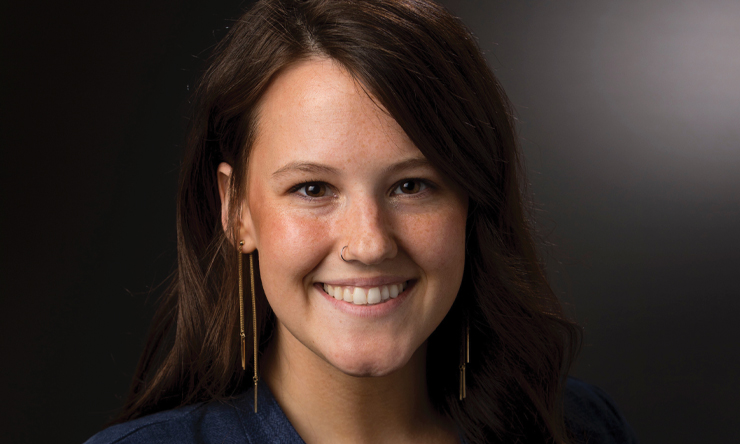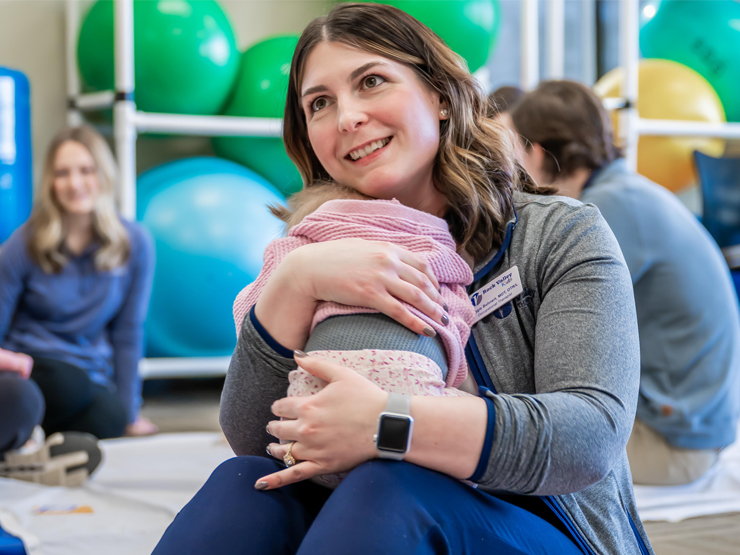Sometimes, life doesn't work out like we'd hoped. Maybe it's a cruel joke on humans to let us know that we should always be on our toes. Professor of English, Carl Herzig, knows that "joke" all too well by now.
Herzig had well-laid plans to take seven students, two alums, and his daughter to Vrindavan, India, during the December break. They were to conduct service learning and volunteer work at Care for Cows and at a school for impoverished children, the Sandipani Muni School, for three weeks. (Herzig's account of the trip is from his notes on Facebook.)
Our plan was to settle in and explore for a few days, then work at the Sandipani Muni School every day from 9-3. We'd emailed ahead portraits, histories, interests, and abilities for each of the students, then met with a coordinator on site to again go over what each could do. And on New Years Day, we took part in the school's wonderful annual gift-giving celebration, handing out bags of supplies and goodies to over a thousand of what had to be the cutest children ever born on earth.
When they arrived to the area in late December, however, it was unseasonably cold; temperatures dipped into the 30s and 40s, prompting the school's leaders to shut down the school.
And it remained closed until two days after the group left India in mid-January.
Herzig's group would have had a Plan B, but there was no Plan B. When Herzig reflected on their experience, he said it was the best kind he could have ever given his students.
Of course there was some obligatory sight-seeing: the Taj Mahal, some shopping in the city, and visiting more religious temples.
We went to Agra and took the mandatory photos in front of the Taj Mahal. We fed baseball-sized winter-formula laddus to the cows at the temple goshala. We watched flocks of pigeons, doves, and parrots carpet the ground during their morning feeding, then, startled by a noise, lift a sheet of fluttering green up into the trees. We did Vrindavan parikrama-the six-mile walk that circles the town, circumambulating all the deities in all Vrindavan's five thousand temples, and attended a sunset Yamuna puja at Kesi Ghat-an offering of fire, flowers, prayer, and loud clanging to the river (see pix & clip). One evening I returned to the flat to find Lila and a half a dozen students, having completed kirtana, reading aloud from the Krsna book of His pastimes in Vrindavan. We toured the Sandipani Muni School and walked an hour away from all the town's noise and construction, through yellow fields of mustard blossoms along a country road (some students repeatedly) to Food for Life Vrindavan's new school, hospital, paper-recycling unit, and cow barn in Kiki-nagla.
Because Hindus are vegetarians, cows are regarded more like pets and sacred creatures than as a food source. Care for Cows is one operation in India that rescues and maintains injured and abandoned cows, bulls, and orphaned calves.
On to find more volunteer projects, Herzig took the group back to the school where an orphanage of about a dozen children also is housed. The students painted two rooms in the school and played with the orphans for a few days, "visiting the children regularly to play, color, read aloud, engage them in physical games, and teach them some English."
Their final project for the trip was to clean up Davanala Kund, a sacred pond in Vrindavan that has dried up and collected garbage and litter.
For several days, we picked up trash, separated plastics, burned paper and organics, swept, dug, shoveled, and hauled. Curious residents emerged from their homes; boys stopped mid-wicket, wondering what these crazy Westerners were doing elbow-deep in refuse. Actually, they were quite friendly and seemed both appreciative and impressed. Both the local and national (and online) news covered the story-in Hindi and English, with photos. People gave us bags and lent us better brooms, and some of the children helped pile loose bricks and deposit paan wrappers into empty cement bags. It was back-bending, thirsty work. I gave the students the meditation that in cleaning a holy place we were cleansing the impurities from our hearts, and some seemed to pick up on that.
Herzig continued to write:
In all, I can't say enough about how well the students responded to everything and how much I was impressed. They worked hard and through challenges; overcame illness, disappointments, and numerous obstacles; survived austerities with little complaint; walked miles; asked (a million) questions; embraced new experiences; tried new foods; treated others with kindness and respect; held themselves to high standards of dress and behavior; sang and danced in kirtana; and reflected upon their own faith as well as other traditions and expressions of love of God.
News
Share This Story



